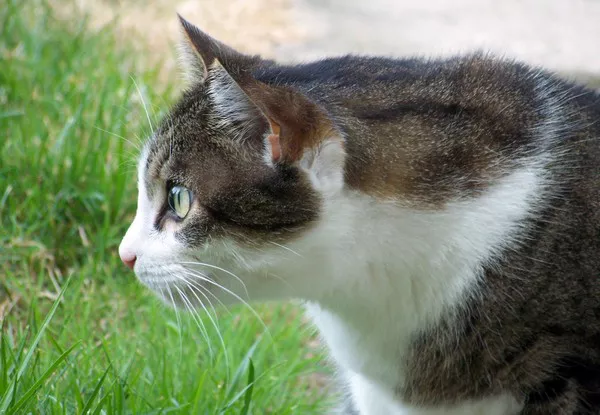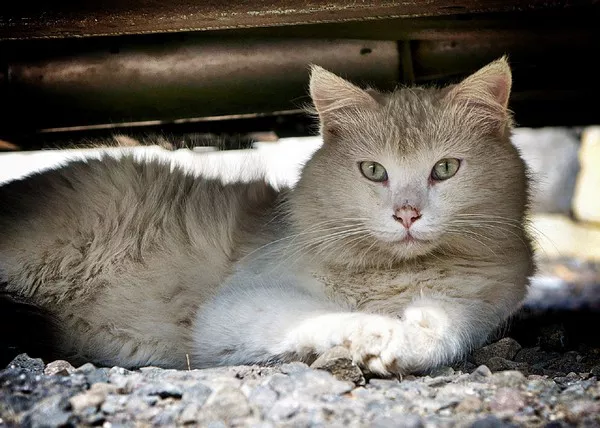Pregnancy in cats, also known as gestation, is a crucial period that requires special attention to their nutritional needs. A pregnant cat, or queen, undergoes significant physiological changes that demand an increase in caloric intake and specific nutrients to support the development of her kittens. Understanding how much food a pregnant cat needs is essential for ensuring her health and the health of her offspring. This essay explores the dietary requirements of pregnant cats, the types of food that are beneficial, the importance of regular veterinary care, and practical feeding strategies to optimize the health of both the mother and her kittens.
Understanding Feline Gestation
The gestation period for cats typically lasts about 63 to 65 days, with some variation depending on the individual cat and the number of kittens. During this time, the queen’s body undergoes remarkable changes, including weight gain, increased blood volume, and the development of mammary glands in preparation for nursing. These changes necessitate adjustments in her diet to meet the heightened energy and nutrient demands.
Stages of Feline Gestation
Early Gestation (Weeks 1-3): In the first few weeks, the queen may not show significant physical changes, and her nutritional needs are only slightly elevated. However, it is crucial to provide a balanced diet to support the initial development of the embryos.
Mid Gestation (Weeks 4-6): This is a critical period where the kittens begin to grow rapidly. The queen’s caloric needs increase significantly, and she may start to exhibit signs of increased appetite.
Late Gestation (Weeks 7-9): In the final weeks, the growth of the kittens accelerates, and the queen will require the highest caloric intake. This period is essential for the kittens’ development, and the mother should be provided with high-quality food to meet her elevated nutritional demands.
Nutritional Requirements for Pregnant Cats
Caloric Needs
The caloric needs of a pregnant cat vary based on her size, age, and the number of kittens she is carrying. On average, a pregnant cat requires approximately 1.5 to 2 times her normal caloric intake. For a typical adult cat weighing around 10 pounds, this translates to about 300 to 400 calories per day, increasing to 450 to 600 calories per day as she nears the end of her pregnancy.
Macronutrients
Proteins: Protein is vital for the growth and development of the kittens. Pregnant cats should consume a diet that is at least 30-40% protein. High-quality protein sources include chicken, turkey, fish, and commercially prepared kitten food, which is formulated to meet the higher protein needs of growing cats.
Fats: Fats are a concentrated source of energy and are essential for fetal development. A diet with around 20-25% fat is recommended, with healthy sources such as fish oil or chicken fat.
Carbohydrates: While cats are obligate carnivores, carbohydrates can provide additional energy. However, they should not make up more than 10-15% of the diet. Whole grains and vegetables can be included in moderation.
Micronutrients
Vitamins: Essential vitamins such as A, D, E, and B vitamins play crucial roles in fetal development and the queen’s health. Pregnant cats should receive a balanced diet that includes these vitamins, either through high-quality cat food or supplements if necessary.
Minerals: Calcium and phosphorus are particularly important for skeletal development in kittens. A pregnant cat’s diet should provide adequate levels of these minerals, especially in the later stages of pregnancy.
Folic Acid: This B vitamin is vital for fetal growth and development. It can be found in green leafy vegetables and certain supplements.
Choosing the Right Food
Commercial Cat Food
The most convenient and effective way to meet the nutritional needs of a pregnant cat is through high-quality commercial cat food. There are specific formulas designed for pregnant and nursing cats, often labeled as “kitten food.” These foods are richer in calories, protein, and essential nutrients.
Dry vs. Wet Food
Both dry and wet foods can be suitable for pregnant cats, but wet food is often more palatable and hydrating. It can also be easier for the queen to consume, especially if she experiences nausea during early pregnancy. A combination of both types can be beneficial, providing variety and ensuring adequate hydration.
Homemade Diets
While some cat owners may prefer to prepare homemade diets, it is crucial to consult with a veterinarian or a pet nutritionist to ensure that the diet is balanced and meets all the nutritional requirements for a pregnant cat. Homemade diets can be challenging to formulate correctly and may lead to deficiencies if not done properly.
Feeding Strategies for Pregnant Cats
Gradual Increase in Food Intake
As the pregnancy progresses, it is essential to gradually increase the amount of food provided. This can help prevent gastrointestinal upset and allow the queen to adjust to her increasing caloric needs. Monitoring her body condition is vital; she should gain weight steadily but not excessively.
Frequent Small Meals
Pregnant cats may benefit from being fed smaller, more frequent meals throughout the day. This approach can help manage any nausea and ensure she receives adequate nutrition without overwhelming her digestive system.
Monitoring Weight and Health
Regular weighing of the pregnant cat can help track her weight gain and overall health. A healthy weight gain during pregnancy is typically around 15-25% of her pre-pregnancy weight. Additionally, regular veterinary check-ups can help monitor her health and the development of the kittens.
Hydration
Proper hydration is as crucial as nutrition during pregnancy. Pregnant cats should always have access to fresh, clean water. Dehydration can lead to serious health issues for both the mother and her kittens. If the queen is consuming dry food, ensure she drinks enough water, and consider incorporating wet food into her diet to increase her fluid intake.
Special Considerations
Health Issues
If a pregnant cat has pre-existing health conditions, such as diabetes or kidney disease, her dietary needs may differ significantly. It is essential to work closely with a veterinarian to develop a suitable feeding plan that addresses her unique health concerns while supporting the pregnancy.
Stress and Environment
The environment in which the pregnant cat is kept can also impact her eating habits and overall health. Providing a calm, quiet space where she feels safe can encourage her to eat well. Stress can lead to decreased appetite and nutritional deficiencies, so minimizing disturbances during her pregnancy is essential.
Preparing for Kittens
As the due date approaches, it is wise to prepare for the arrival of the kittens. This includes setting up a comfortable nesting area where the queen can give birth and care for her young. Ensuring she has a quiet, safe space can help reduce stress and promote a successful birthing process.
Postpartum Nutrition
After giving birth, a queen’s nutritional needs will change again. She will require even more calories to support lactation and the growth of her kittens. The caloric intake for nursing cats can be as high as 2-4 times their normal requirements, depending on the number of kittens. Continuing to provide high-quality kitten food is essential during this period.
Conclusion
Feeding a pregnant cat requires careful consideration of her nutritional needs to ensure her health and the healthy development of her kittens. By understanding the stages of gestation, the importance of macronutrients and micronutrients, and the best feeding strategies, cat owners can provide the support their queens need during this critical time. Regular veterinary check-ups and monitoring of the queen’s health and weight will further contribute to a successful pregnancy and a healthy litter of kittens. By prioritizing nutrition and care, we can help ensure a bright future for both mother and her young.
Related topic:



























